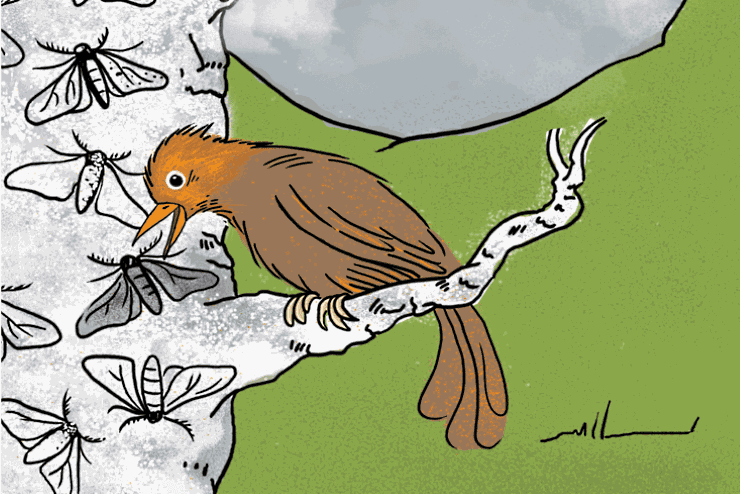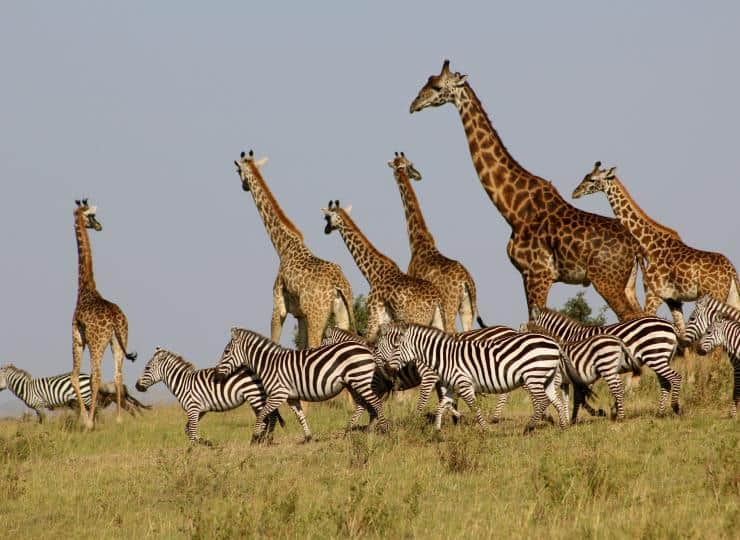Natural selection is one of the main driving forces of biological evolution. In the first article of my evolution series, you learned that biological evolution occurs mainly due to random mutations when organisms copy DNA.
While random mutations should result in random changes, most evolutionary changes are not even close to random due to natural selection. But what is natural selection?

Natural selection is the process by which organisms that survive and reproduce better than others leave offspring and become more populous over generations. There are three essential points to understand.
- Many traits are determined by genetics and thus can be inherited. For example, adults who can run quickly are more likely to have children who can run quickly. This is also true for many other traits, such as height, eye color, leaf shape, and hemoglobin efficiency. All of these characteristics can be passed down to offspring.
- Traits differ among individuals. You may notice that not all peacocks have equally beautiful and long tails. Similarly, not all coconuts have equally thick shells, trees don’t grow equally tall, and not all cheetahs can reach speeds of 110 km per hour.
- Some versions of traits are better for survival and/or reproduction than others. Imagine that, while out picking berries in the woods with your friends, you encounter a tiger. If you’re a fast runner, you are less likely to get killed than they are. As a result, you may also live long enough to have children, and your children will likely be fast runners, as well.
It is important to note is that survival and reproduction abilities among organisms do not need to be significantly different. For instance, it is not reasonable to expect that fast runners would have ten offspring, while slow runners would have only one or no offspring.
Instead, one should expect that, on average, across a large population, faster runners would have slightly more children. Even a difference of a few percent would be sufficient because, over many generations, faster individuals would dominate the environment.
It’s like artificial selection, but natural
Natural selection, to a degree, is similar to artificial selection. In the latter, however, people deliberately set goals. If a farmer desires wheat with larger spikes, then they would review all wheat plants available, select the ones with the largest spikes, and sow them. Nature, for that matter, can not choose goals for selection. She has to work with what’s occurring naturally — survival and reproduction.
You may have previously heard that the primary goal of all living beings is to survive and reproduce. This is not entirely correct because natural selection has no goal—it simply happens. If someone is better than others at making copies of itself, then it will reproduce better than others.
Of course, one could easily see a goal-oriented theme in this: if you “need” to be everywhere, you “have” to be better at being everywhere. In reality, no one “needs” or “has” to be everywhere. Organisms that are better at being everywhere will be everywhere, regardless of whether they need to.
Natural selection is also what gives evolution a direction. Without natural selection, giraffes would not have long necks. Look at zebras, for example. Since they don’t eat leaves, their survival does not depend on how high they can reach; thus, from the length of their necks.

Natural selection has no power over the neck length of zebras, and that is why it stays short. Looking at zebras and giraffes side by side, you can easily spot how much of a difference natural selection can make.